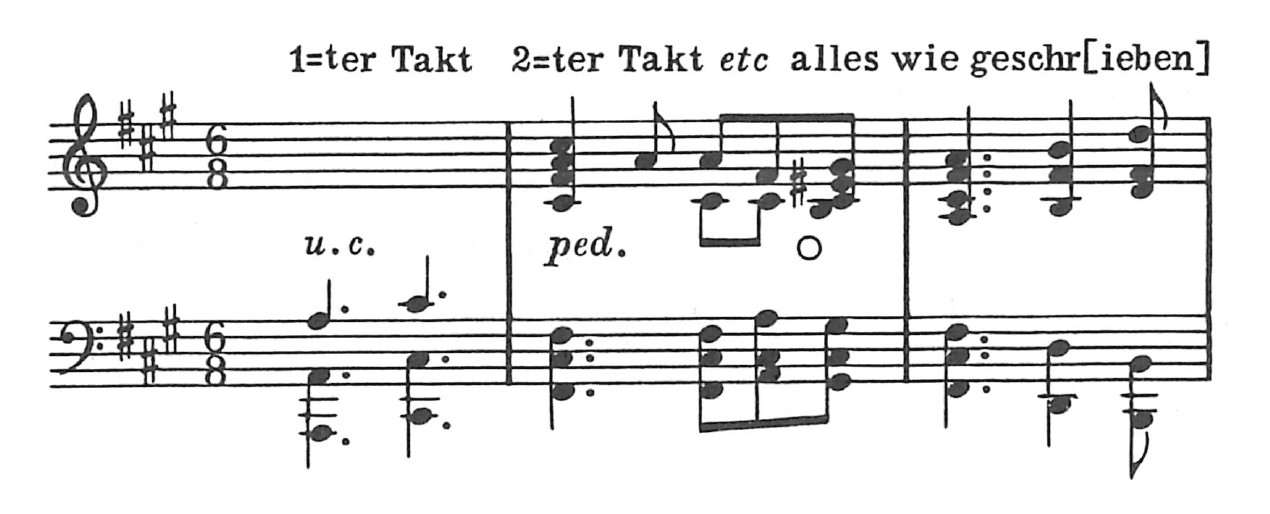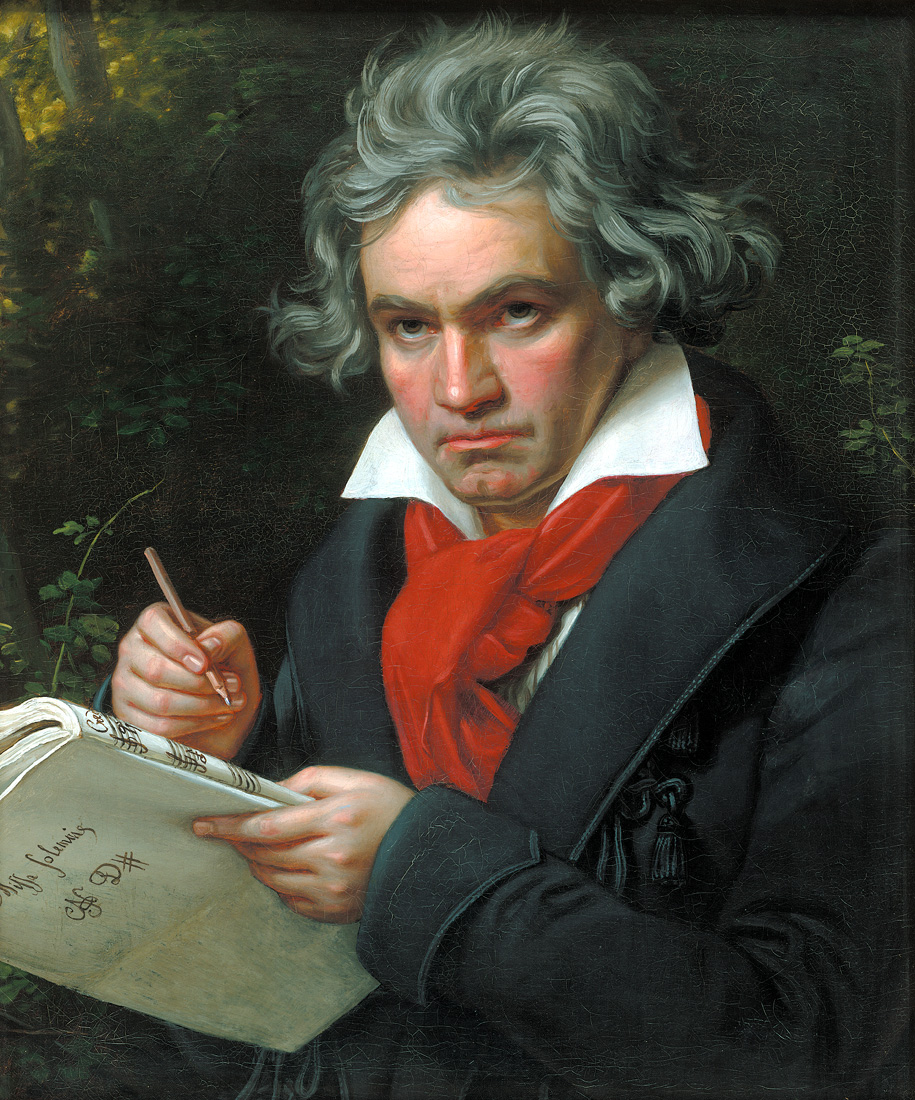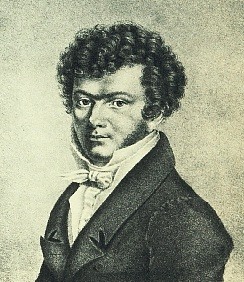Located now and again amongst the sources for Beethoven’s compositions listed in the composer’s works’ thematic catalogue is a section on a rare but nonetheless informative type of source relevant for each edition: his lists of corrections or proofreading indications that are usually to be found in letters to publishing houses or mediators. A quick cursory skim.
Correction lists appear relatively late in a composition’s chronological series of sources. The now extant documents disclosing Beethoven’s corrections are almost exclusively those in conjunction with the publication of works on which creative work had been completed. In essence these lists are the results of technical work, the activity of proofreading. Beethoven significantly intervened at this point in his composition only in the rarest of cases – and yet sometimes this did occur, as for instance with the Hammerklavier sonata: Once the manuscripts for this sonata had already been sent off to Leipzig and London for printing, he decided to preface the slow movement with the moving one-measure introduction/transition that can hardly be surpassed in its simplicity. In a letter to his former pupil Ferdinand Ries, who was attending to its publication in London, Beethoven wrote in June 1819:
‘Here, dear R. the tempos of the sonata […] 3rd piece M. Metronom ![]() = 92 | to be observed hereby is that the first measure must still be inserted, namely:
= 92 | to be observed hereby is that the first measure must still be inserted, namely: 
* * *
When, around the turn of the 19th century, Beethoven began selling his works not only to Viennese publishers – on his doorstep, so to speak – he quickly discovered that the physical distance to Leipzig, Bonn, Zurich, Berlin or London entailed its own difficulties. For whereas in Vienna he was able to visit the publishers without much effort and could repeatedly proofread the prepared music engravings and galley proofs, partly on the spot and partly in his own flat, the purchasers in other European cities often refused to delay publication, sometimes for months, for the back-and-forth despatch of proofs. They probably deliberately took the risk that here and there not everything in the music text was perfectly rendered and sometimes even made do with having experienced local musicians do the proofreading or, fatally, “mitigating” the music text where it appeared somewhat “bizarre” – as was well-known to be the case frequently with Beethoven.
Lists of corrections have therefore come down to us mainly from the period after 1800, with just a single exception: in June/July 1793, Beethoven, in Eisenstadt, i.e., outside Vienna, had apparently received for correction preliminary proofs of his variations for violin and piano on “Se vuol ballare” from Mozart’s “Figaro” WoO 40. He wrote to a staff member, not further identified, of the Artaria publishing house and reported a long list of errors that he had found in the engraving (Beethoven Briefwechsel Gesamtausgabe [Collected Correspondence], Letter No. 10).

Beethoven to an employee of the Artaria & Comp. publishing house, after 19 June 1793. All illustrations courtesy of the Beethoven-Haus in Bonn.
A clear pattern in Beethoven’s approach to proofreading is emerging here. He is obviously repeatedly working through the music text – jumping back and forth after a first pass and citing further passages. Strikingly enough, although he is paying close attention to the music text’s primary signs, pitch and rhythm, he is not reporting any errors in the secondary signs, especially dynamics and articulation, with marginal details disturbing him, instead. He complains, for example, in the passage shown above, that the number “6” was twice engraved on a sextuplet figure.
At the close of this letter he justifiably declares how important it was to him that the correction be implemented: ‘You are very plagued by this trifle [probably meaning: pettiness], meanwhile you see for yourself that they are important errors. I ask you to hurry, of course, so that all this […] is changed. If several have already been sold, artaria must see to it that it gets the exemplars back and corrects the errors.’ In fact, all the changes requested in the letter were made in the known exemplars of the original edition.
* * *
In 1803 Beethoven accepted the young Ferdinand Ries as a pupil, but soon employed him as a “general factotum”, especially also for organising the music scores for performances and for attending to the publication of his works. In 1802, for example, Beethoven had sold his piano sonatas op. 31 to the Zurich publisher Nägeli (they appeared in 1803), an unusual partner choice that was soon to arouse his fury. For not only had Nägeli not sent preliminary proofs for correction, but in the 1st sonata he had also taken the liberty of “improving” Beethoven’s music text. Ferdinand Ries writes about this in his biographical notes:
‘“Play once through the sonatas,” he [Beethoven] said to me, remaining seated at the writing desk. There were so many errors in them, which made Beethoven very impatient. At the end of the first Allegro, in the sonata in G major, Nägeli had even composed in it four measures, namely after the fourth measure of the last stop:  When I played these, Beethoven jumped up in a rage, came running and half pushed me away from the piano, screaming: “Where the hell is that?” – One can hardly imagine his astonishment and anger when he saw it printed like that. I received the assignment to make a list of all the errors and to send the sonatas immediately to [the publishing house] Simrock in Bonn, which was to re-engrave them and add to them: Edition très correcte.’ (Franz Gerhard Wegeler and Ferdinand Ries, Biographische Notizen über Ludwig van Beethoven, Coblenz, 1838)
When I played these, Beethoven jumped up in a rage, came running and half pushed me away from the piano, screaming: “Where the hell is that?” – One can hardly imagine his astonishment and anger when he saw it printed like that. I received the assignment to make a list of all the errors and to send the sonatas immediately to [the publishing house] Simrock in Bonn, which was to re-engrave them and add to them: Edition très correcte.’ (Franz Gerhard Wegeler and Ferdinand Ries, Biographische Notizen über Ludwig van Beethoven, Coblenz, 1838)
Nikolaus Simrock in Bonn did, in fact, also agree to publish these sonatas, and in May 1803 Beethoven’s brother Kaspar Karl could inform Simrock of the extent of the resulting list of corrections: ‘Write us so that we can send you a list of some 80 errors therein.’ (Briefwechsel letter No. 139). Though the list itself has unfortunately disappeared, as has an exemplar of the original edition showing the corrections, we know from Ferdinand Ries that he took over the entire organisation with Simrock, including proofreading, and was able to report in December: ‘He [Beethoven] also sends you his heartfelt thanks for the 2 Zurich sonatas. They please him very much and he certainly wishes to be able to have several exemplars of them.’ (Briefwechsel letter No. 173)
* * *
As of 1805, Beethoven initially had to dispense with Ferdinand Ries’s in-house services in these matters, for his pupil left Vienna and travelled back to Bonn. The composer now had to take care of organising the process of proofreading for himself, and an intensive correspondence developed with, for example, the Leipzig publishing house Breitkopf & Härtel. Appearing from the publishing house between 1809 and 1812 were opp. 67 to 86, a very considerable group of the composer’s most important works, including the 5th and 6th symphonies, the 5th piano concerto, Fidelio, Christus am Ölberge and the Mass in C major. Beethoven complained over and over to Breitkopf that he was not being sent proofs of all the prints for proofreading. For example, on August 21, 1810: ‘Incidentally, because I know that the manuscript may be as correct as desired, but can be misinterpreted, I would still like to see the exemplars beforehand so that hereby their beautiful editions would also gain more’ (Briefwechsel letter No. 465). The tone in a letter of 15 October 1810 is already becoming sharper, Beethoven is explaining himself in greater detail:
‘Make sure and please do what I have often asked, send a trial exemplar, but also the manuscripts, people complain about the inaccuracy of the engraving, and I have noticed that even the clearest writing is misinterpreted – we recently went through the 4-part songs and others by Haiden [Haydn] engraved by you and found incredible errors and also many of them […] Why I request the manuscripts with the trial copy is because I hardly ever have any, because here and there a good friend may request them of me […] It is also embarrassing for the author not to know that his work is correct’ (Briefwechsel letter No. 474).
Nevertheless, for the moment Breitkopf continued sending the prints only after their publication, though in the first months of 1811, preliminary proofs were finally sent him of, for instance, the fifth piano concerto op. 73, the choral fantasy op. 80 and the piano sonata op. 81a. But he was rightly sceptical:
‘That you are already sending the concerto to the Industrie Komptoir [music dealers and publishers], and who knows where else is not at all fine with me, before you have received the corrected proofs, why do you not want to publish a work without errors, the corrected proofs of the concerto left here the day before yesterday, when the Industrie Komptoir receives the concerto I must have the errors [presumably to be continued: ‘made publicly known’ or ‘have corrected in ink in the exemplars there’]. Nb: there are errors enough in the K [concerto]. Next Saturday the fantasy proofs will likewise be sent with my score, but the latter I ask for back again straightaway’ (Briefwechsel letter No. 495)
Following to the Leipzig publishers three days later is another letter, by now notorious for opening with Beethoven’s strong outburst:
‘Errors—errors—you yourself are a single error – since I must send my copyist, since I must go myself, if I want my works – not to appear as mere errors – the music tribunal in L.[eipzig], as it seems, does not produce a single proper proofreader, yet they still send the works off before they receive the corrected proofs’ (Briefwechsel letter No. 496).
It is only fair, however, to quote as well from further on in this letter, for Beethoven’s outburst soon turned, after all, to more moderate tones:
‘Farewell, I’m hoping [for] improvement […] Err as much as you want, leave as many mistakes as you want – you are highly esteemed by me, this is even the custom amongst people, that you are esteemed because you have not made any major mistakes – your most devoted servant Beethowen.’
Enclosed with this letter was – of course – another list of corrections!
* * *
From April 1813 to 1824, Ferdinand Ries lived in London – and was once again hired by Beethoven as an assistant in many publishing matters. For already a few years earlier the composer had begun to sell his works profitably not only to one publisher, but concurrently to several in different countries. Muzio Clementi, for example, had bought for London the opp. 73 to 82 group of works that Beethoven – as reported above – had also sold to Breitkopf, and was having them appear in parallel there in 1810/11. Thus, it was obvious for Beethoven to ask Ries to arrange for the publication of further compositions in London: ‘I would like you to see that the following 2 works, a large solo sonata for piano and a piano sonata that I myself have transformed into a quintet for 2 violins 2 violas 1 violoncello, go to a publisher in London’ (Briefwechsel letter No. 1258, shortly before or on 19 May 1818). The piano sonata mentioned was none other than the Hammerklavier sonata op. 106, that Beethoven had also sold at the same time to the Viennese publisher Artaria. In order to serve both publishers, he had to have copies of his autograph made by his copyist Schlemmer and his assistants. This hardly went well:
‘R., please forgive me for the inconvenience I am causing you, it is incomprehensible to me how so many errors could have been found in the copy of the sonata, the haste may have been partly to blame, and that the copyist did not copy it himself but had it copied by someone else, the errors were only found when playing through the exemplar copied here, some of which may also have already been corrected earlier’ (Briefwechsel letter No. 1295 of 19 March 1819).
This letter was accompanied by probably the most comprehensive Beethoven list of corrections known to us, though unfortunately only fragments of the list have survived; estimated to have once been listed are 150 corrections, of which 114 are still extant today. Here, too, as in the 1793 list to Artaria, it is worth taking a closer look at the kind of corrections that Beethoven recorded. The majority relate to pitch corrections or clarifications by means of accidentals (in 50 measures Beethoven adds lacking or deletes incorrect signs, cautionary accidentals are added in 28 measures). The other corrections – sorted by frequency – concern adding or deleting notes and/or rests, note values or rhythm, note position (including stemming direction and beaming), pedal, trills, tempo and bar lines. In the entire list, there is not a single directive regarding dynamics or articulation markings, which is just about what happened to the variations WoO 40 of 26 years earlier.
Beethoven’s list of corrections: As can be seen, an unusual, rare but important kind of source for every editor.





Beethoven says, “ and a piano sonata that I myself have transformed into a quintet for 2 violins 2 violas 1 violoncello.” Which quintet is he referring to here? I thought that I was familiar with all of Beethoven’s string quintets, including those that were arranged from previous incarnations, but I know of no such transformation from piano sonata to quintet.
Dear Mr Solow,
Although Beethoven says “sonata” he actually talks about his piano trio op. 1 no. 3 which he transformed into the quintet op. 104.
Best wishes
Norbert Gertsch